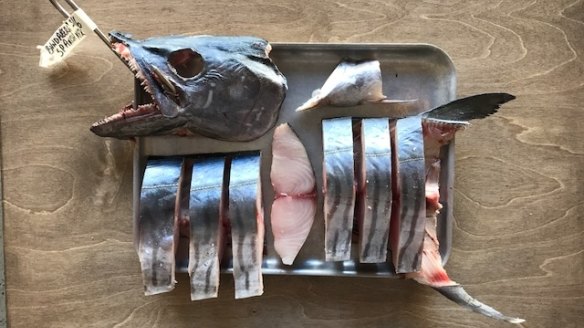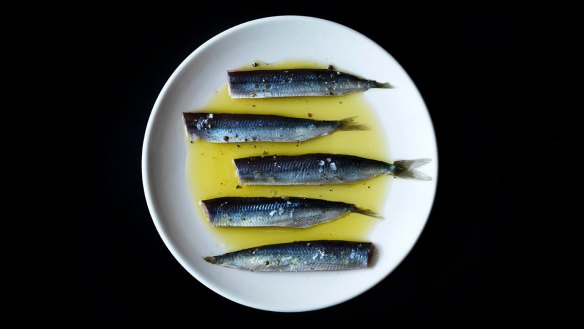Why you don't want to cook a wet fish

COMMENT
Once a fish is on the line and leaving the water, the clock starts ticking.

Attention needs to be given to every detail when dealing with fish. How it is caught and killed. How it is stored. How it is handled and butchered and the method of cookery applied to suit each specific species. All of this needs to happen in a timely fashion and the fish must remain below 2-3C throughout.
Ice slurries are used as a method to kill fish as it is imperative that the fish's core temperature cools rapidly upon death as the residual heat can spoil the flesh and make a cross-section of raw fish look as if it has already been cooked.
For me, this is the last interaction a fish should have with ice. Beyond this point, any water or ice used is slowly destroying the fish itself.
Basically, you want to avoid a wet fish once it's out of water. Washing a fish with tap water increases the temperature, and water will make its way into the muscle or stay trapped in vacant pockets where the scales once were.
Water sits in these pockets the same way water remains in a sponge. When heat is applied to fish protein, moisture escapes and evaporates. If there is excess moisture present, the skin will struggle to stay crisp or the flesh will be wet and potentially mushy if cooked through.
I believe that ageing fish is more of an essential requirement of a seafood restaurant rather than a personal approach. Given the nature of Australian fish markets, some days the haul is amazing and on other days there is not a fish in sight.
However, that's what excites me the most – no two days are ever the same. When excellent fish hit the market floor, I want to take as much as I can hold. This means I need to create the right conditions for fish to have optimum storage potential.
Ageing fish in a controlled environment allows me to heighten or promote certain nuances in a fish's flavour profile. Moisture removal is key to harnessing those flavours. If you can find the sweet spot of the right amount of moisture matched with the natural oils of the fish, it is a wonderful experience both to cook and eat.
This is what I do at Saint Peter and what we will be extending into Fish Butchery, where fish will be displayed in static refrigeration rather than on ice.
We also hope to educate customers on the benefits of cooking and eating lesser-known species of fish.
Most shoppers favour species they're familiar with, such as salmon, snapper and barramundi. I want to entice them to try other fish such as trevally, mackerel and mullet. These fish are just as delicious (if not more so), and we can relieve pressure on the supply of heavily consumed species.
We want customers to have an enjoyable experience when trying a new species of fish. We want to ensure that when you buy fish at the butchery, you will be just as excited about eating it at home as I am eating it at Saint Peter.
Josh Niland is chef and co-owner of Sydney's Saint Peter with his wife Julie. Fish Butchery is set to open in Oxford Street, Paddington, in April.
Restaurant reviews, news and the hottest openings served to your inbox.
Sign up